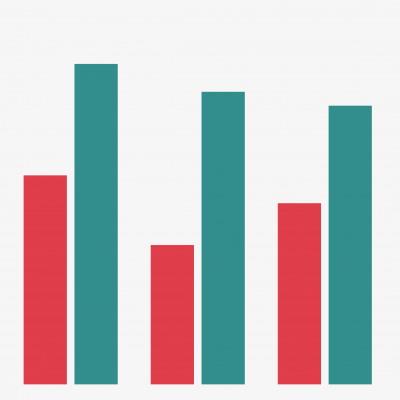Where next for NHS nurses' pay?
14 June 2022

Key points
- The gruelling effects of the pandemic and cost-of-living crisis have accelerated the need to review the current approach to NHS nurse pay determination, to ensure it can be fit for purpose as part of an overall NHS workforce strategy.
- This analysis looks at the impact of high inflation and other factors affecting nurse pay, assessing the potential implications for the 2022 NHS Pay Review Body recommendations on nurses' earnings. Secondly, we consider the extent to which the current pay determination system could be improved to meet NHS nurse workforce priorities.
- Between 2011 and 2021, NHS nurses’ average basic earnings fell by 5% in real terms (after accounting for consumer price inflation). While the trend in nurses’ average earnings compared favourably with teachers and police officers, for example, the government-imposed 7-year public sector pay cap (which ended in 2017), led to a significant drop in nurses’ pay compared with overall average earnings across the wider economy. Nurses’ average earnings fell by 1.2% a year in real terms between 2010 and 2017, while economy wide employees’ average earnings fell by 0.6% a year in real terms over the same period.
- If the NHS Pay Review Body recommendations accept government’s request to cap any pay increase for 2022/23 at 3%, a further significant real-terms reduction in nurses’ pay will be the likely outcome.
- There must be a fully effective and independent review body system, based on full commitment of all parties, including governments, to accept, implement and fund its recommendations in full. This has not always happened in the past.
- Three further implications need to be considered:
- It is necessary to break the short-term, narrow annual focus on ‘how much’ NHS nurses’ pay increases in a year. Government should consider moving to a standardised, multiple year pay cycle – probably of 3 years – to free up space for creative, longer term thinking on pay.
- The gender and ethnicity pay gap review, proposed by the Department of Health and Social Care, must be actioned rapidly. Transparent pay equity for NHS nurses will underpin both retention and career progression.
- The coverage of the current Review Body could be adapted to create policy and fiscal space for targeting and prioritisation – for instance, to target and retain highly skilled nurses who are high risk for early retirement or reduced hours.
Figure 1:
While longer term projections made by the Office for Budget Responsibility (OBR) in March 2022 suggest that inflation will drop back to 4% in 2023 and 1.5% in 2024, many working nurses will never have experienced such high inflation during their career. This has been compounded by additional employment and fiscal changes that have hit the take-home pay of some NHS staff. These include increased National Insurance contributions (NICs) for some higher paid NHS nurses and increased pension contributions for some. (Calculations from the Institute of Fiscal Studies (IFS) suggest that employees earning less than around £35,000 will see a fall in their overall NICs bill in 2022/23 relative to 2021/22, while those earning more than £35,000 will see an increase.)
Against this background, we set out a brief analysis of recent trends in nurses’ earnings. It is evident that over the past decade, NHS nurses’ average basic earnings have fallen in real terms (relative to CPIH inflation, Figure 2 and Figure 3). The 3-year Agenda for Change pay award in 2018 led to a gradual increase in NHS nurses’ average basic earnings, but this was not sufficient to reverse the decline from 2010/11 to 2017/1818, and the rapid increases in inflation over the past year have had a visible negative impact (Figure 3).
Figure 2:
NHS Digital defines mean annual basic pay per FTE to be the ‘mean amount of basic pay paid per 1 full-time equivalent post in a 12 month period’. *We use ONS data on the 12-month CPIH for March in each year from 2011 to 2021 to estimate real-terms earnings. As NHS staff earnings data for March 2022 were unavailable at the time of writing, we used data on the mean annual basic pay per FTE in March 2021 and increased that by 3% to reflect the Agenda for Change pay award for 2021/22. The March 2022 nominal earnings estimate is therefore provisional and is likely to vary significantly for individual nurses.
Figure 3
NHS Digital defines mean annual basic pay per FTE to be the ‘mean amount of basic pay paid per 1 full-time equivalent post in a 12 month period’. *We use ONS data on the 12-month CPIH for March in each year from 2011 to 2021 to estimate real-terms earnings. As NHS staff earnings data for March 2022 were unavailable at the time of writing, we used data on the mean annual basic pay per FTE in March 2021 and increased that by 3% to reflect the Agenda for Change pay award for 2021/22. The March 2022 nominal earnings estimate is therefore provisional and is likely to vary significantly for individual nurses.
At the time of writing, the NHS pay award for Agenda for Change staff for 2022/23 is yet to be decided. From the government’s perspective, there is a trade-off between higher NHS staff pay increases and the amount of activity that can be delivered under current funding plans. A one percentage point pay award increase costs around £900m across the overall NHS HCHS workforce (equivalent to around 16,000 FTE nurses). This underlines the centrality of aligning staff pay with national workforce planning, with growth in pay and staff activity appearing to be perceived as alternatives. This is all the more relevant in the context of the government’s recently stated NHS efficiency target of 2.2% a year.
Nurses’ pay in 2022/23: two scenarios
We have analysed what alternative pay awards would mean for nurses’ average basic earnings in real terms, using two possible estimates for inflation over the year 2022/23: 4% (the OBR’s latest estimate for 2023); and an alternative ‘higher’ estimate of 8% (Figure 4). A 3% pay award would lead to nurses’ basic earnings falling on average in real terms in both inflation scenarios. In the higher inflation scenario, even a 6% pay award would not deliver real-terms earnings increases in 2022/23 for many nurses. A 12.5% award would lead to a real-terms increase under either inflation scenario. It is important to recognise that these are averages and that pay changes for individual nurses will vary considerably.
Then, we also consider the implications of high proportions of nurses being at the top pay point on Agenda for Change pay bands, which places primary emphasis on total pay uplift rather than individual pay progression as the main source of pay increase. The NHSPRB has, in the past, noted the need to ‘de-compress’ some pay bands to provide more pay headroom. The DHSC, in its evidence to the NHSPRB this year, has also reflected, ‘Over the longer term however there is some evidence that earnings for nurses grow less quickly than for graduates from other subjects. For example […] median earnings for nurse graduates are around £5,800 higher than average 1 year after graduation but this gap closes over time and after 10 years median earnings for nurse graduates are below other graduates.’ Recent analysis by the IFS has highlighted compression of pay distribution in the NHS and other parts of the public sector since 2010.
Figure 4:
Figure 5:
Though nursing graduates may initially experience higher median earnings than the overall median earnings of graduates of other subjects in the 5-year period after graduation, their earnings then fall below the overall median 10 years after graduation. Also, in the longer run, increased student nurse loan repayments and longer repayment periods could have a negative effect on both future recruitment levels and retention.
Growth in international recruitment
The second ‘new’ recruitment inflow – international recruitment – has also grown rapidly. Data from the Nursing and Midwifery Council (NMC) published in May 2022 pointed to a record annual high in the number of international nurses newly registering to practice in the UK (around 23,400). This largely reflects rapid sustained increases in the number of nurses from non-European Economic Area (EEA) countries newly registering with the NMC between 2014/15 (around 650) and 2021/22 (around 22,700, see Figure 6). Data from the Organisation for Economic Co-operation and Development (OECD) on international comparisons align with these numbers, showing that the proportion of nurses trained outside the UK is higher than in many comparable OECD countries.
Figure 6:
Given this increase in international inflow, and some growth in applicants to pre-registration education, nurse retention rather than recruitment is currently looming as the more immediate problem for NHS employers. It is likely to become even more challenging if the anticipated growth in outflow of nurses experiencing burnout and those nearing retirement materialises in the next couple of years.
Nurse retention and burnout
The NMC’s recent register report highlighted that the number of nurses leaving its permanent register increased by nearly 3,000 in 2021/22, after having declined steadily between 2017/18 and 2020/21. NHS Digital data indicate that nurse and health visitor leaver rates declined from 9.8% in the year to December 2019 to 8.6% in the year to December 2020 (which includes the first phase of the impact of the pandemic), but then increased to around 10.1% in the year to December 2021.
A membership survey conducted by the RCN in October 2021 indicated that almost 6 in 10 of over 9,500 respondents (56.8%) were considering or planning leaving their current post (including planning for retirement). The main reasons given for thinking about leaving were feeling undervalued and feeling under too much pressure. Around 6 in 10 (62.7%) reported that their pay band or level was inappropriate. The main reasons for dissatisfaction were that pay levels had failed to keep up with increases in the cost of living; dissatisfaction with organisational pay structures; and perceived failure to reward nursing staff fully for their effort and contribution. The much larger NHS Staff Survey, conducted in 2021, reported that 40.5% of surveyed registered nurses and midwives felt burned out because of their work. Along with nursing and health care assistants, they were more likely to have worked in COVID-19 wards or areas than all other staff.
These data highlight the increasing difficulties in recent years of holding onto NHS nursing staff. This aspect of the overall pattern of nurse labour market behaviour may be more open to influence by pay increases and other policy adjustments, including fine-tuning pension contribution requirements.
The retention challenge is partly a function of the ageing workforce, with a higher proportion of registered nurses reaching potential retirement age, notably in NHS community nursing (Figure 7). It also partly reflects the impact of COVID-19. Over the past decade, the age profile of the nursing workforce has aged considerably. There are almost 20,000 more nurses aged 55 and older now than in 2010 – an increase of almost 70%. There are also far fewer nurses aged between 34 and 44, falling from almost a third of the nursing workforce to just a quarter over the decade. In the short term, the impact of the pandemic suppressed NHS nurse leaver and retirement rates, and increased ‘return’, as more nurses came back to the NHS or moved to work at the front line. However, in the longer term, the pandemic is likely to negatively impact on retention because of staff burnout, reduced hours and early retirement.
Figure 7:
NHS registered nurse shortages pre-dated the pandemic, and have not changed markedly in the past 2 years, as measured by overall vacancies of around 10% (although the analysis shows variable impact across the NHS). There are marked regional variations in vacancy rates, with London and the South East reporting higher rates, of 12.8% and 10.8% respectively (Figure 8).
Figure 8:
There has also been considerable change in FTE registered nurse vacancies by service area as a proportion of the total, which stood at 38,972 in the quarter to March 2022. (Table 1). There has been a particularly marked reduction in the proportion of overall vacancies accounted for within acute services, from 73% (28,981) in the quarter to March 2019 to 64% in the quarter to March 2022 (24,911). Relative to April–June 2018 levels, the percentage of NHS registered nurse vacancies in mental health services has increased by over 25%, accounting for 29% (11,239) of the total of FTE registered nurse vacancies in the quarter to March 2022.
Table 1: Registered FTE nurse vacancies by service area in England, percentages* and overall total (January–March 2019 to January–March 2022)
| Service area | January–March 2019 | January–March 2020 | January–March 2021 | January–March 2022 |
|---|---|---|---|---|
| Overall total* | 39,524 | 36,083 | 34,678 | 38,972 |
| Acute | 73% | 68% | 69% | 64% |
| Ambulance** | - | - | - | - |
| Community | 3% | 4% | 4% | 5% |
| Mental health | 21% | 26% | 24% | 29% |
| Specialist | 2% | 3% | 2% | 2% |
*The first row provides the absolute total number of FTE nurse vacancies.
** These numbers are less than 0.5% after rounding.
Further reading
Work with us
We look for talented and passionate individuals as everyone at the Health Foundation has an important role to play.
View current vacanciesThe Q community
Q is an initiative connecting people with improvement expertise across the UK.
Find out more

